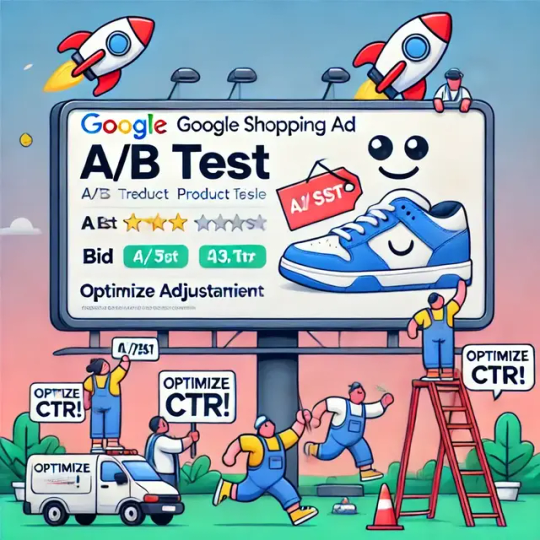Security Analyst at CRO.media: Protects Shopify stores from cyber threats and data breaches.
Don't wanna be here? Send us removal request.
Text

The Role of Responsive Design Tools in CRO
Discover how responsive design tools enhance user experience and improve conversion rates through mobile optimization.
Source: https://cro.media/insights/ux-ui/role-of-responsive-design-tools-in-cro/
As the internet landscape increasingly shifts toward mobile-first usage, responsive web design tools have become integral to modern web development. The tools examined in the article reflect a broader trend of prioritizing mobile responsiveness, which is crucial not only for aesthetics but also for conversion rate optimization (CRO). Websites that function smoothly across a variety of devices significantly enhance user experience, reduce bounce rates, and improve conversion potential.
CRO and the Importance of Mobile-First Design
One of the main drivers behind the use of responsive design tools is the surge in mobile web traffic. With 65.47% of internet traffic in 2023 originating from mobile devices, businesses can no longer afford to overlook the mobile experience. Mobile-friendly websites aren't just about looking good—they are essential for keeping users engaged and converting them into customers.
Poor mobile experiences often lead to higher bounce rates and diminished brand perception. In the context of CRO, even a minor issue with responsiveness—such as slow loading times, awkward layout adjustments, or broken links—can directly impact conversion rates.
Analyzing Key Responsive Design Tools for CRO
Bootstrap: Speed and Simplicity for Quick Prototyping
Bootstrap’s pre-built responsive components allow designers to quickly implement flexible grid systems, which is a key aspect of ensuring that websites look great on any device. From a CRO perspective, the rapid prototyping facilitated by Bootstrap can be essential for testing different layouts and optimizing user flows, especially in the early stages of a website’s design.
The grid system also makes it easier to structure a layout that adapts seamlessly to mobile, reducing the chances of users abandoning the site due to poor design. This adaptability is crucial for maintaining engagement and ultimately improving conversion rates.
Elementor: Customization Without Code for WordPress Sites
For WordPress-based websites, Elementor stands out as an easy-to-use page builder with responsive editing capabilities. It allows designers to adjust and preview mobile and tablet views with ease, a functionality that directly supports CRO efforts. By optimizing design specifically for smaller screens, businesses can reduce friction and ensure that calls to action (CTAs) are visible and functional on mobile devices.
Elementor’s drag-and-drop interface also makes it easier for non-technical users to collaborate with designers and developers, improving workflow efficiency and shortening the time to launch—all crucial for optimizing the customer journey.
Figma: Collaborative Design with Flexibility
Figma excels in real-time collaboration, allowing teams of designers and developers to work together efficiently. From a CRO standpoint, Figma’s ability to create flexible components and test responsiveness during the design phase is a significant advantage. The real-time feedback loop helps designers tweak elements for mobile, ensuring the layout remains functional and aesthetically pleasing, which enhances the user experience and conversion opportunities.
Sketch: Design with a Focus on UI/UX
Though not as intuitive as Figma, Sketch’s vector-based tools and responsive design features cater to more experienced designers. Its comprehensive plugin library supports advanced customization, which is essential for creating unique and tailored user experiences that align with the brand’s goals. In CRO, a smooth, visually consistent experience across devices can significantly boost user trust and improve conversion rates.
Marvel and Mockplus: Prototyping and Interactive Feedback
Both Marvel and Mockplus focus on the prototyping and testing stages of the design process. By allowing designers to build responsive wireframes and prototypes, these tools make it easier to iterate quickly and test how different layouts function across various screen sizes. Marvel’s focus on collaboration, particularly for teams, ensures that responsive design is built into the feedback process from the outset, supporting a more fluid and user-centered design evolution—a key component of effective CRO.
Froont and Responsive Design Checker: Specialized Tools for Testing
For developers who already have a strong tech stack but need quick, reliable testing of responsiveness, Froont and Responsive Design Checker are invaluable. They allow designers to verify that a site’s layout works across multiple devices, ensuring that potential CRO issues related to mobile responsiveness are caught early. This ensures that users don’t encounter problems that could harm their experience, leading to higher retention and better conversions.
Connecting Responsive Design to CRO
In the context of CRO, responsive design isn’t just about creating visually appealing websites—it’s about building experiences that foster engagement and drive actions. Websites optimized for mobile not only cater to the largest and most diverse group of users but also reduce barriers that may prevent users from converting. Every tool mentioned above contributes to making that optimization process more efficient, from prototyping and design to testing and collaboration.
Performance and Load Speed
Responsive design also affects website load times, an increasingly important factor in CRO. Mobile users are especially sensitive to slow load times, with many leaving a page if it takes too long to load. Many of the tools listed—especially frameworks like Bootstrap and Foundation—offer built-in mobile-first approaches that can significantly improve performance on mobile devices, further enhancing conversion rates.
Final Thoughts on Tools and CRO Integration
Responsive design tools are not just helpful—they are essential for optimizing the mobile user experience, which is directly tied to conversion rates. From ensuring that sites perform well across various devices to streamlining the collaboration process between developers and designers, these tools reduce friction and enhance the user journey. By adopting the right responsive design tool, businesses can ensure that their websites are optimized for every device, improving both user satisfaction and conversion potential.
0 notes
Text

Maximizing Conversion Through Google Shopping Ads with CRO
Discover how to optimize Google Shopping Ads for better conversions and ROI using CRO strategies.
Source: https://cro.media/insights/strategies/maximizing-conversion-google-shopping-ads-cro/
At CRO Media, we understand that every touchpoint in the buyer journey is an opportunity to convert. Google Shopping Ads present an essential tool for eCommerce businesses to showcase their products and drive sales. By integrating Conversion Rate Optimization (CRO) principles with Google Shopping campaigns, businesses can optimize every aspect of their product listings to boost conversions.
Optimizing Product Listings for Better Conversions
One of the key factors influencing the success of Google Shopping Ads is the quality of the product feed. The product title, description, images, and price are essential elements that directly impact click-through rates (CTR) and conversion rates. From a CRO perspective, optimizing these elements is critical.
Product Titles: Craft titles that are both descriptive and keyword-rich, ensuring that the most important details appear early in the title. The clearer the product description, the more likely visitors are to convert once they click.
High-Quality Images: Given that Google Shopping Ads display product images, ensuring these images are high-resolution and well-cropped will drive more engagement. Dynamic product imagery can also enhance user experience, encouraging more conversions.
Price and Promotions: Competitive pricing and clear sale information can make a significant difference in conversion rates. CRO strategies like highlighting discounts and promotions within your Google Shopping Ads can increase the likelihood of a sale.
Using CRO for Campaign Structuring and Bidding
Effective Google Shopping ad campaigns depend on more than just creating great ads; they also require a solid campaign structure and bidding strategies that align with your conversion goals.
Bid Adjustments: By using strategies like Return on Ad Spend (ROAS), businesses can set up bidding that aligns with their conversion objectives. CRO principles can guide businesses to make more strategic bidding decisions based on data and historical performance.
Performance Max Ads: These ads leverage machine learning to optimize for conversions across multiple Google platforms. By setting up a campaign goal, businesses can maximize revenue while CRO-driven adjustments—such as refining audience targeting and enhancing ad copy—can boost performance even further.
A/B Testing and Conversion Tracking
To continually refine and improve your Google Shopping Ads, CRO practices such as A/B testing and conversion tracking are invaluable. By comparing different ad versions or feed updates, you can determine which combinations of product titles, images, and descriptions yield the best results.
A/B Testing: Test different headlines, CTAs, and ad formats to see which performs better. This continuous iteration helps drive incremental improvements in your conversion rate.
Conversion Tracking: Without conversion tracking, it's impossible to gauge the effectiveness of Google Shopping Ads. By setting up robust conversion tracking, businesses can gather the data needed to optimize future campaigns.
Optimizing Ad Extensions for Higher Engagement
Using Google’s ad extensions can significantly enhance the visibility and relevance of your Shopping ads. Adding extensions like sitelinks, price extensions, or promotion extensions ensures that potential customers are provided with more information upfront, improving their chances of converting. CRO focuses on reducing friction at every stage of the user journey, and extensions make it easier for customers to take action.
Leveraging Behavioral Insights for Dynamic Remarketing
Dynamic remarketing ads, powered by data from your product feed, are one of the most effective ways to retarget visitors and boost conversions. By showing previous site visitors products they’ve already viewed, businesses can re-engage them and drive conversions. CRO tools like heat maps and session recordings help identify key user behavior patterns, which can then be used to refine remarketing strategies and ensure higher conversion rates.
Enhancing User Experience Across Devices
Since mobile traffic continues to dominate, ensuring your Google Shopping Ads are optimized for mobile is essential. Mobile-optimized ads and landing pages significantly improve the user experience, which is a critical factor in conversion rate optimization. CRO Media emphasizes the importance of a seamless mobile shopping experience—from faster load times to clear, easy-to-navigate product pages—to capture the increasing number of mobile shoppers.
Continuous Optimization for Long-Term Success
CRO is not a one-time task but an ongoing process of learning, testing, and refining. With Google Shopping Ads, businesses can continually optimize their campaigns by using the insights gathered from A/B testing, user behavior analysis, and performance metrics. The goal is to continually enhance product feeds, refine ad targeting, and optimize bidding strategies to maintain an upward trajectory in conversions and ROI.
By combining Google Shopping Ads with targeted CRO strategies, businesses can maximize their digital ad spend and enhance their conversion rates. At CRO Media, we specialize in helping businesses refine their online presence, optimize ad campaigns, and drive sustainable growth through strategic CRO practices.
0 notes
Text

Maximize AOV and Conversion Rates with ABConvert
Maximize your Shopify store’s performance with ABConvert A/B testing for pricing, shipping, and product content.
Source: https://cro.media/insights/ab-tests/maximize-aov-conversion-abconvert/
ABConvert is the ultimate solution for Shopify merchants looking to enhance their average order value (AOV) and conversion rates (CVR) through powerful A/B testing. Whether you're testing product prices, shipping rates, or product content, ABConvert provides you with the data-driven insights necessary to make informed decisions and boost your store's performance.
Product Price Testing: Master Profit-Driven Pricing
Finding the perfect price point is crucial for maximizing both revenue and conversion rates. ABConvert allows you to split test product and variant prices in real-time, helping you identify the optimal price that increases profit while maintaining customer satisfaction.
Learn more about optimizing your Shopify pricing strategy with our Shopify CRO Audit service.
Shipping Rate Tests: Maximize Shipping Revenue
Determining the best shipping rate and free shipping threshold can significantly impact your store's bottom line. With ABConvert, you can test various shipping options and thresholds on your Shopify store in real-time, allowing you to experiment with different pricing strategies and find the perfect balance that increases your average order value.
For expert insights on optimizing shipping rates, check out our Shopify SEO Audit service.
Product Content Testing: Optimize Your Product Pages
ABConvert also allows you to test various product descriptions and variant images to discover which messaging resonates most with your customers. This real-time testing enables you to refine your product content, leading to better engagement and higher conversion rates.
Looking for custom solutions? Explore our Shopify Development services to tailor your product pages for even greater success.
Advanced A/B Testing with ABConvert: Data-Driven Decisions for Growth
With ABConvert, you can leverage comprehensive data analytics to make informed decisions about your Shopify store's A/B testing strategy. Our intuitive tools ensure you have access to the insights you need to refine your pricing, shipping, and content strategies, helping you outpace competitors and achieve long-term success.
For a broader range of Shopify services, from SEO to development, consider exploring our Shopify services for expert assistance in every aspect of your store's performance.
Start Your Free Trial Today
ABConvert offers a seamless way to experiment with your Shopify store's various elements. Whether you're testing pricing strategies, shipping thresholds, or product content, our tool ensures you can make data-backed decisions quickly and effectively.
Start maximizing your store's AOV and CVR today by starting your free trial with ABConvert!
0 notes
Text

Crafting a Value Proposition to Drive CRO Success
Boost your CRO with a clear, compelling value proposition tailored to your audience.
Source: https://cro.media/insights/marketing/crafting-value-proposition-cro-success/
In the world of Conversion Rate Optimization (CRO), a solid value proposition is crucial. It serves as the cornerstone of your marketing and sales strategy, directly influencing how visitors perceive your product and whether they take the desired action on your website. A well-crafted value proposition not only communicates the unique benefits your product offers but also sets the stage for optimized conversions.
The Value Proposition and CRO Relationship
The value proposition plays a direct role in driving conversions by addressing customer pain points and offering clear, actionable solutions. It's the hook that grabs attention and pushes visitors further down the conversion funnel, making them more likely to take actions such as signing up, making a purchase, or engaging with your brand.
Target Audience Clarity
A great value proposition starts by addressing the core needs and pain points of your target audience. In CRO, identifying these elements helps to create focused landing pages that convert. By narrowing in on the specific problems your product solves, you can craft CTAs and copy that resonate with your visitors and guide them through the decision-making process.
Product Differentiation and Competitor Comparison
In CRO, differentiating your product is key to standing out in a crowded market. A value proposition should highlight what makes your solution better than others. By clearly distinguishing your product's unique benefits and features, you reduce friction during the conversion process and increase trust. This aligns perfectly with CRO strategies, which aim to minimize bounce rates and maximize engagement.
“A well-crafted value proposition grabs attention, addresses customer needs, and differentiates your product, ultimately guiding visitors through the conversion funnel.” The Value Proposition and CRO Relationship
Benefits and Features Focus
For CRO, showcasing the direct benefits of your product is paramount. A strong value proposition doesn’t just talk about what the product does but demonstrates how it solves specific problems. It answers questions like: Will this save me time? Make my life easier? Improve my business performance? These are the questions that visitors seek answers to when considering conversion.
Execution Excellence for Trust
A value proposition must not only be clear and compelling but also executable with excellence. If your product or service doesn't live up to the promise made in the value proposition, it can quickly lead to distrust and abandonment. In the CRO space, maintaining this consistency across all touchpoints is critical for ensuring that visitors follow through with conversions rather than bounce off in search of more reliable solutions.
Implementing a Strong Value Proposition for CRO
Clear, Specific, and Differentiated
Your value proposition should focus on clarity, specificity, and differentiation to stand out. These elements work together to create a seamless user experience on your site that guides visitors from curiosity to conversion. By directly addressing your customers’ core needs and offering a unique solution, you create a powerful incentive to engage and convert.
Testing and Optimizing
Just like with any CRO strategy, testing is key. A/B testing different versions of your value proposition can reveal which phrasing, offers, or solutions resonate best with your audience. Continuously refining your value proposition ensures that it remains relevant, effective, and optimized for conversions.
“Just like with any CRO strategy, testing is key.” Testing and Optimizing
Example: CRO MEDIA’s Value Proposition
CRO MEDIA’s value proposition—“Free CRM Software That Grows With Your Business”—directly speaks to small and medium businesses looking for an accessible CRM solution that scales with their growth. This clear, concise message highlights both the primary benefit (a free, scalable CRM) and a key differentiator (an easy-to-use platform). By aligning with the target audience’s needs, this value proposition not only drives engagement but also maximizes conversions by eliminating common pain points, such as complicated and expensive CRM systems. A Shopify agency can help implement this effectively.
Conclusion: Value Propositions as the Heart of CRO
Crafting a great value proposition is essential for any CRO strategy. It drives conversions by addressing visitor pain points, differentiating your brand, and delivering clear benefits. Whether you’re creating landing pages, refining CTAs, or optimizing user flow, a strong value proposition is the foundation of success. Ensure that your value proposition speaks directly to your audience's needs, differentiates you from competitors, and delivers on its promises to maximize your website's conversion potential. Learn more about our Shopify CRO audit services.
1 note
·
View note